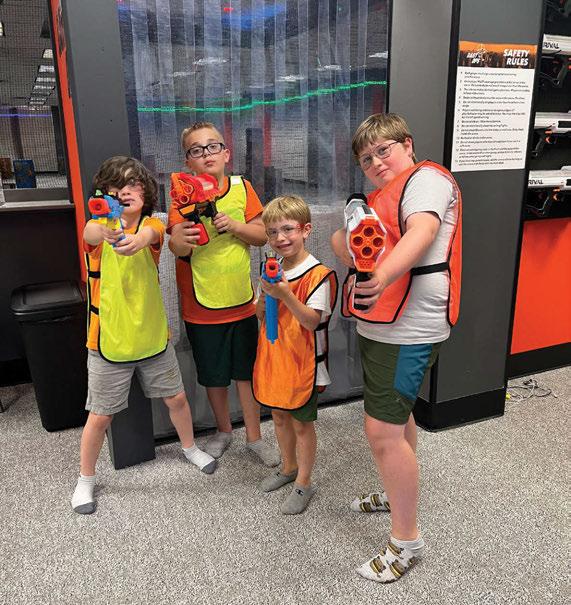
3 minute read
BABY SKIN needs tender, loving care
Your little one’s skin is as delicate as it comes and prone to skin problems; and summertime brings along a whole new list of precautions. With heat and humidity prevalent, say hello to weird rashes and other skin problems.
If you see a weird rash arise, don’t panic. Babies have very sensitive skin and most likely it is a common rash that can be cleared up with a little love and care. Heat rashes and sunburn are some of the most common skin rashes in the summertime and it is up to you to prevent both of them from happening. Knowing how to care for your baby’s skin during the summertime is the most important thing you can do for prevention.
Heat Rash
Heat rashes (also known as prickly skin or miliaria) are clusters of small red blisters whereas a sunburn leads to red, irritated patches on the skin. Both can often look similar. So how do you know which is which? Heat rash can be itchy and uncomfortable, making Baby pretty fussy. Although anyone can get a heat rash, babies are especially susceptible because their sweat glands are less developed than kids and adults. Fortunately in most instances, heat rash doesn’t require medical care and clears up on its own, with a little help from you.
Apply a cool compress to the skin such as a cold, wet rag; use tepid water during bath time and gently pat dry. Going forward, keep
Baby in a cool environment; avoid oils and powders (these can make rashes worse!); loosen Baby’s diaper so it doesn’t rub against the skin; let your little one be free — free of clothing that is! Allow them to play around the house only in a diaper or even go for a little naked stroll if the weather cools off later in the evening.
If you notice any fevers, sore throat, severe blistering, infections or the redness doesn’t go away within three days, contact your pediatrician right away.
Babies And Sunburn
Sure, for Baby’s 6 months and older, there are safe sunscreens out there, but for babies younger than 6 months, what do you do? UV protectant hats and clothes from head-to-toe with a side of shade — shade from the sun, that is. If the right clothing and shade are not available, you can use sunscreen on small areas of their tiny bodies, such as the face and the backs of the hands.
The most sun damage occurs in childhood, according to the American Academy of Pediatrics (AAP). Also, just because you don’t see it doesn’t mean it isn’t there — your little ones’ skin can still be damaged overtime even though there is no physical sunburn.
The AAP reports that the effects of sun exposure build over the years, so that even moderate exposure during childhood can contribute to wrinkling, toughening, freckling and even skin cancer later life. In addition,, some medications can cause a skin reaction to sunlight, and some medical conditions may make people more sensitive to the sun.
So what if Baby does get a sunburn?
“The signs of sunburn usually appear six to 12 hours after exposure, with the greatest discomfort during the first 24 hours,” according to the AAP. “If your child’s burn is just red, warm and painful, you can treat it yourself. Apply cool compresses to the burned areas or bathe the child in cool water. You also can give acetaminophen to help relieve the pain (checking the package for appropriate dosage for age and weight).”
KEEP BABY’S SKIN HEALTHY
• Keep Baby in the shade. If you can’t find any, create your own using an umbrella, canopy or the hood of a stroller.
• Dress Baby in sun-protective clothing. In addition, make sure your baby always wears a wide-brimmed hat and sunglasses with UV protection.
• Minimize sunscreen use on babies younger than 6 months old. For babies 6 months and older, sunscreens containing titanium dioxide or zinc oxide are less likely to irritate their sensitive skin. Reapply sunscreen every two hours or after swimming — there is no such thing as “waterproof” sunscreen.
• Be sure Baby gets plenty of fluids on hot days with extended periods outdoors.
Amanda Hayward is editor of this magazine and a mom of three kids with one on the way.
by Amanda Hayward









